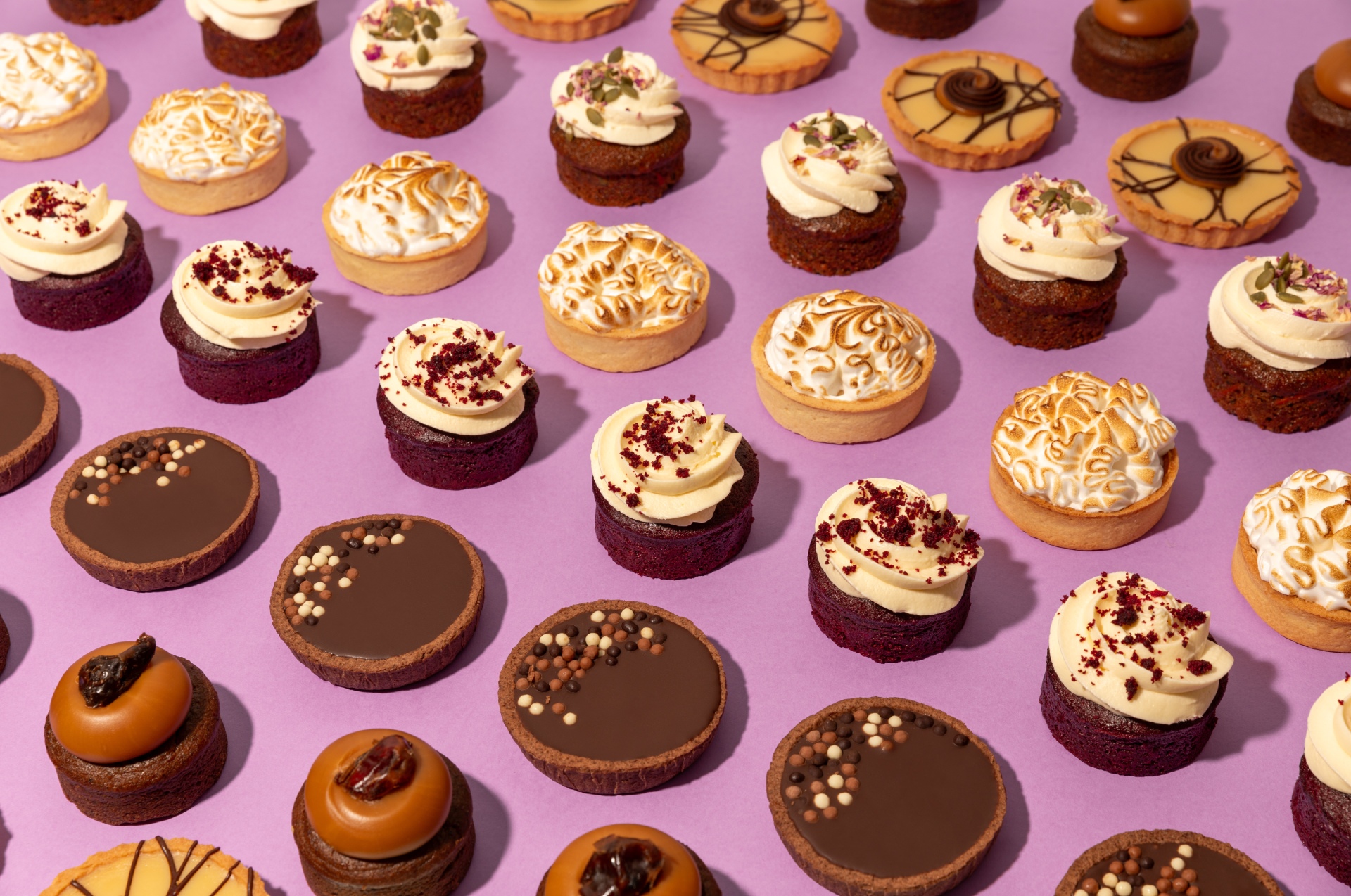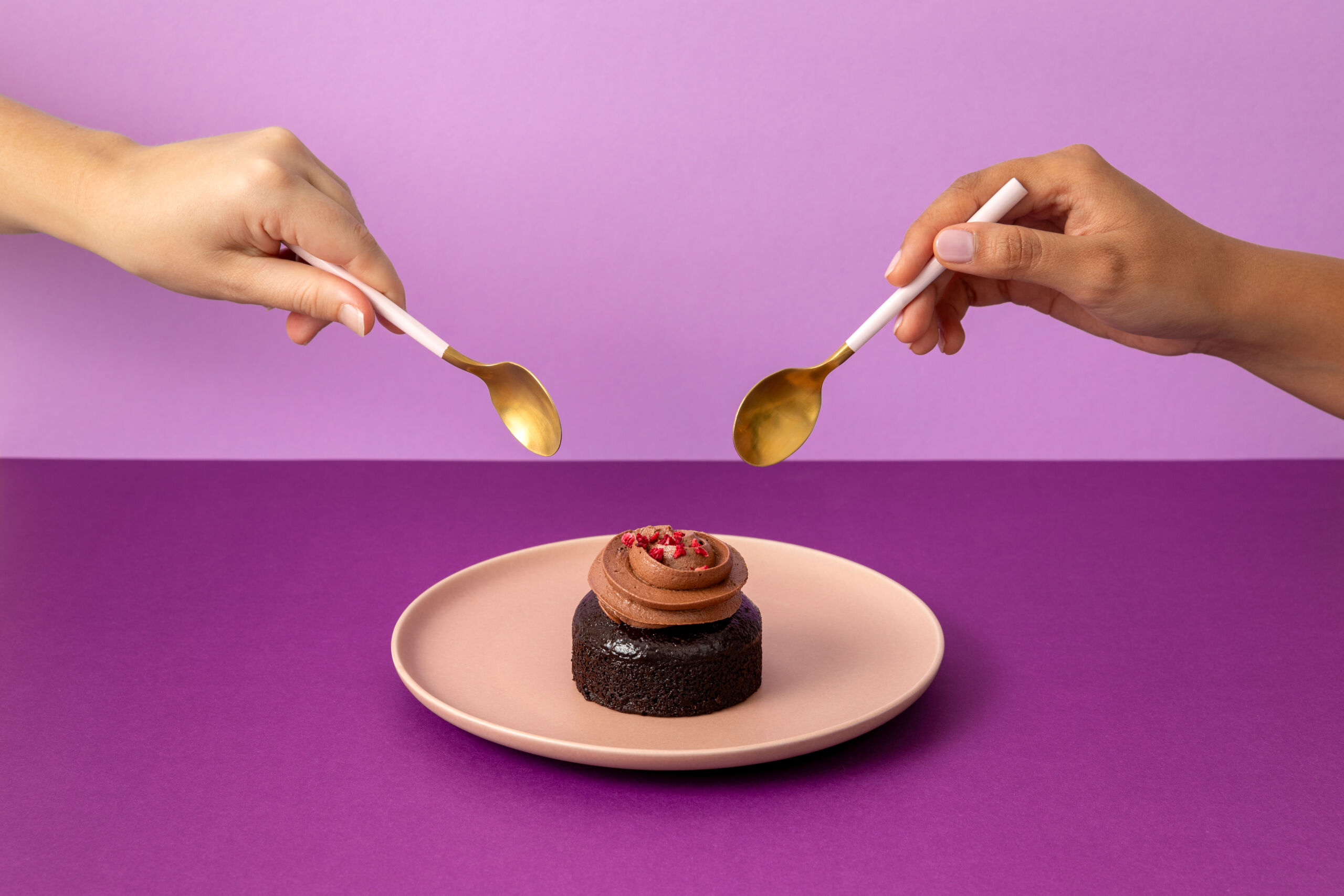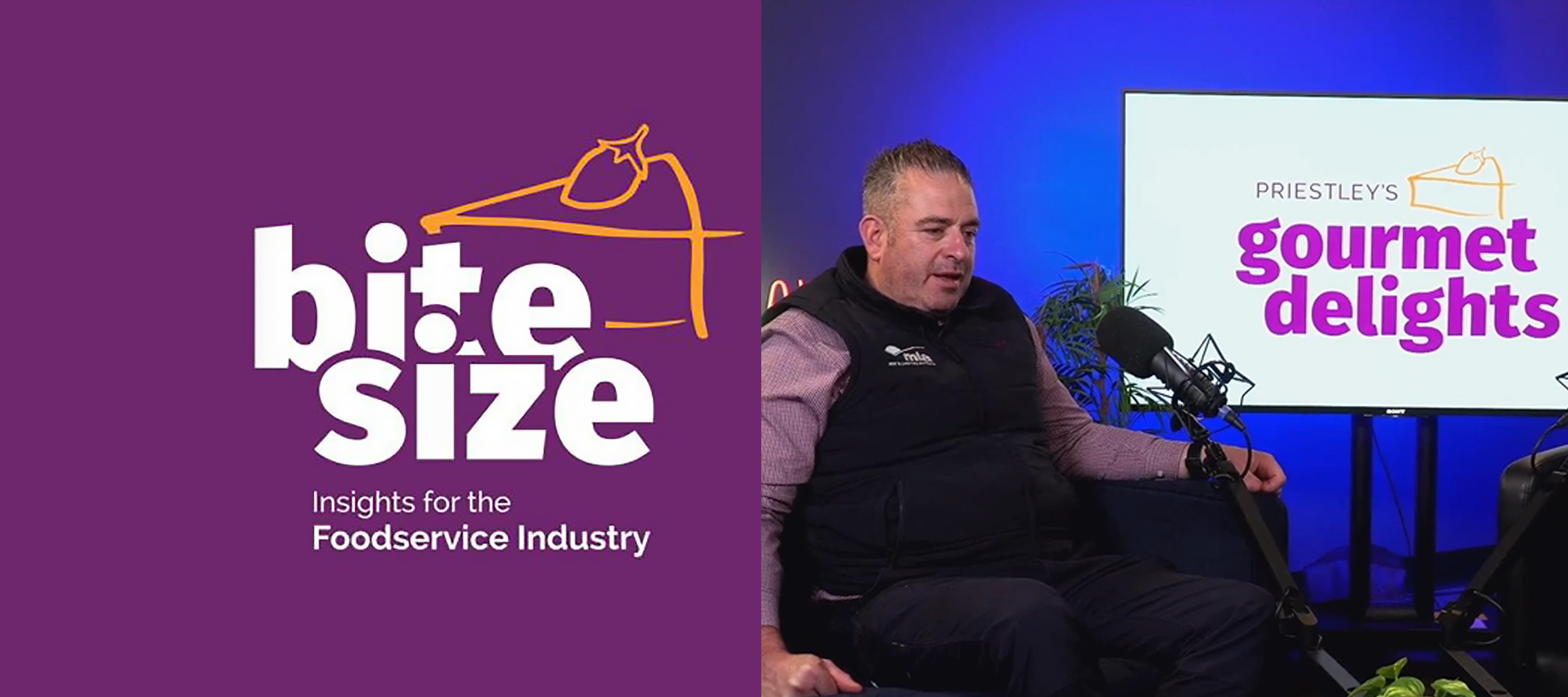At a glance
- Understand the different storage zones for frozen, refrigerated, and ambient desserts, ensuring each category is stored optimally to maintain freshness and quality.
- Master the art of defrosting, from slow overnight thawing for frozen desserts to natural room temperature adjustment for refrigerated treats, preserving texture and flavour.
- Choose a wholesale dessert supplier with a proven track record, a diverse product range, competitive pricing, and excellent customer service for consistent quality and success in your business.
Bulk desserts can be an excellent way for businesses like bakeries, cafés, restaurants, and catering services to save money and keep customers happy. When you buy desserts in larger quantities, it can be cheaper than purchasing individual portions. Plus, it makes it easier to track what you have and ensure that you always have enough to serve your customers. However, it’s really important to make sure that you store and handle these desserts properly to stay fresh and delicious for your customers.
Think of your favourite desserts as fresh flowers – they need to be taken care of in a specific manner to retain their freshness, flavour, and quality. If not stored correctly, even the most exquisite pastries can turn stale and unappetising. But don’t worry! This guide will teach you the best ways to store and handle your desserts in large quantities to ensure they stay delicious from when you buy them to when you devour them.
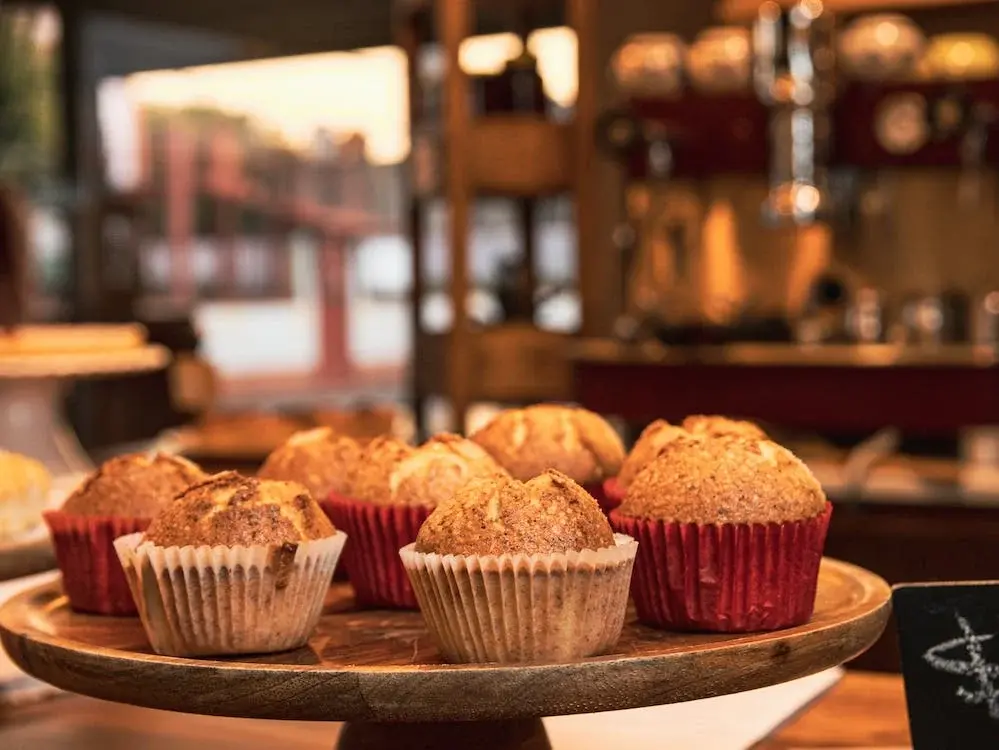
Understanding Shelf Life: The Key to Freshness
Understanding the shelf life of desserts is crucial for keeping them fresh and delicious for as long as possible. Desserts can be categorised into three main storage zones, each with its own unique lifespan. Whether you’re storing a delicate cheesecake or a hearty loaf, it’s important to know the specifics of each zone to ensure the longest possible shelf life for your sweet treats. So, let’s explore these storage zones in detail before diving into the specifics of dessert storage.
Frozen: Frozen storage is a great option if you want to keep your desserts fresh for an extended period. It can preserve a range of treats, such as cheesecakes, slices, and mousse cups, ensuring they’re ready to be enjoyed whenever you want something sweet.
Refrigerated: When we take cakes, gâteaux, and loaves out of the freezer, we can put them in a cool place to keep them fresh for a short time. Remember, this method can help slow the ageing process, but it won’t stop it completely. It’s essential to keep this in mind and enjoy these treats while they are still fresh.
Ambient: Maintaining the ideal room temperature is essential for preserving the quality of baked treats like cookies, brownies, and bars. Although they last longer when stored at room temperature than when chilled, protecting them from excess heat and humidity is crucial to prevent spoilage.
Wholesale dessert companies will advise the recommended storage method and shelf life of each product depending on where it is being stored- usually up to 360 days in the freezer, 5 days in the fridge and 3 days ambient.
How to store bulk desserts after purchase?
Now, let’s get down to the nitty-gritty: the ideal storage method for each dessert category. Remember, a one-size-fits-all approach is a recipe for disaster. Every product will have its own unique shelf life that should be tested and proven to make the most out of the product whilst also being food safe.
Gâteaux & Logs
These majestic, layered masterpieces deserve the royal treatment. Store gâteaux & logs in their original packaging or transfer them to sturdy cake carriers. Avoid stacking or placing heavy objects on top to preserve their delicate structure. Ensure proper air circulation to prevent condensation from marring their beauty in refrigeration. Usually, these desserts bode best in a refrigerator, and can be stored anywhere from 3-5 days depending on the product.
Cheesecakes
The creamy champions of indulgence should be thawed and defrosted properly to ensure its decadent texture and taste remains perfect. Wrap individual portions snugly in plastic wrap or store them in airtight containers to prevent drying or absorbing unwanted flavours. For larger cheesecakes, invest in a cake carrier for additional protection. Remember, even in the frozen land, their delicate nature persists. Thaw them slowly in the refrigerator overnight for optimal texture.
Individual Cakes & Desserts
Cupcakes, cakes, mini cheesecakes, and other individual portions crave a cosy corner in airtight containers or snug plastic wrap. Refrigeration extends their shelf life while preserving their moistness. Thaw them gently in the fridge before serving.
Muffins & Friands
These humble heroes are generally happy at room temperature for a few days. However, if longevity is your quest, wrap them individually in plastic wrap or store them in airtight containers. Refrigeration lengthens their shelf life considerably, but remember to bring muffins & friands to room temperature before serving to avoid crumbliness.
Loaves & Breads
Hearty and rustic, loaves can handle room temperature storage for a few days. For extended freshness, wrap them tightly in plastic wrap or store them in airtight containers. Refrigeration offers significant shelf life extension, but bring them to room temperature before slicing to avoid tearing.
Pavlova & Dessert Sauces
The meringue magic of pavlova requires special attention. Store them uncovered in a cool, dry place away from direct sunlight. The delicate nature of the meringue makes refrigeration unsuitable. Dessert sauces, depending on their ingredients, may require refrigeration or pantry storage based on the manufacturer’s instructions.
Slices
Individual portions of cake and pie find solace in airtight containers or wrapped snugly in plastic wrap. Refrigeration is their friend, extending their shelf life while preserving their moistness. Thaw them in the refrigerator for a gentle reawakening before serving.
Large Tarts & Pies
Similar to gâteaux, these grand creations deserve sturdy cake carriers or their original packaging. Avoid pressure from stacking or heavy objects. Refrigeration lengthens their shelf life but ensure proper air circulation to prevent condensation.
Individual Tarts
Depending on ingredients, these bite-sized delights may be stored at room temperature for a short time, but refrigeration extends their shelf life considerably. Store them uncovered in a container to prevent condensation or softening of the crust.
Savoury Creations
Quiches and other savoury creations can be stored at room temperature for a few hours or refrigerated for up to 3 days. Wrap them tightly in plastic wrap or aluminium foil to prevent drying out.
Tray Cakes
These versatile treats can be stored at room temperature for a day or two, but refrigeration lengthens their shelf life. Cover them loosely with plastic wrap to prevent drying and allow air circulation.
Kids Delights
Colourful cupcakes and fun cookies can temporarily be stored at room temperature, but refrigeration preserves their freshness and vibrancy for longer. Store them in airtight containers to prevent them from absorbing other flavours.
Grab & Go
Pre-packaged convenience delights generally have specific storage instructions based on their ingredients and preparation methods. Follow the manufacturer’s recommendations to ensure optimal freshness and quality.
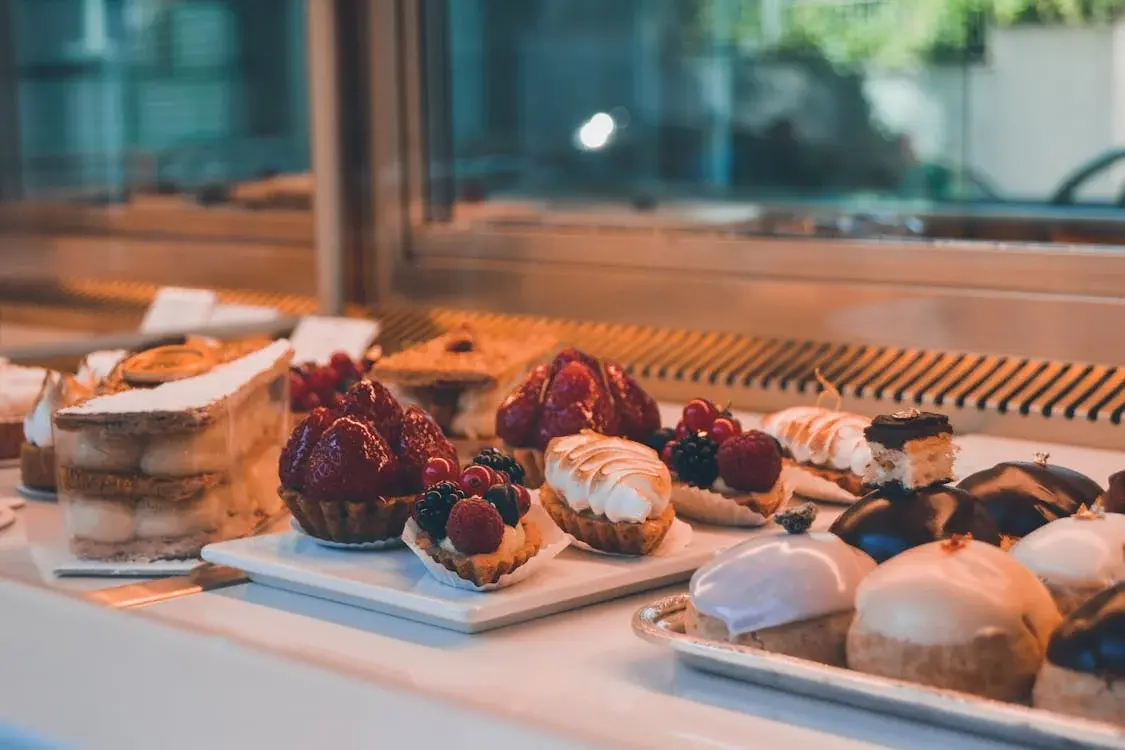
Handling of bulk desserts: From Defrosting to Delight
Many wholesale dessert companies will deliver their products snap frozen. This not only preserves the freshness of every delicious creation but allows easy transportation and storing. So, you’ve received your delivery of decadent desserts- what’s next? Simply store in your freezer and when you want to serve, simply thaw what you need.
Thawing bulk desserts is an easy, but precise art form. Rushing the process can result in textural mishaps and flavour imbalances. Here’s the lowdown on defrosting different categories:
Frozen desserts: Allow them to thaw slowly in the refrigerator overnight. This gentle approach prevents the dreaded “weeping” effect, where ice crystals melt and create an undesirable soggy texture. Most dessert products will have specific instructions on how long each product takes to defrost.
Freezer to Plate desserts: Some can even be served directly freezer to plate, by simply taking your pre-portioned cut or slice of dessert and microwaving it, following the recommended heating instructions.
Heating and Serving
When it comes to heating bulk desserts, proceed with caution. Overheating can turn a delightful treat into a rubbery disaster. Here are some guiding principles:
Cakes and loaves: Follow the recommended heating instructions on the packaging or recipe. Generally, low and slow oven reheating is the way to go.
Individual portions: Microwaving can be a convenient option for single-serve items, but use the defrost setting or low power to avoid uneven heating and hot spots.
Things to consider when storing and handling bulk desserts
Implement a FIFO (First-In-First-Out) system to ensure older desserts stay at the back of the storage shelf.
Label everything: Don’t underestimate the power of labelling. Clearly mark your containers with the type of treat, date of preparation, date of expiration and any special storage instructions. It’s recommended that vegan, vegetarian, gluten or dairy free products are labeled with these call outs as well. This promotes organisation and prevents accidental serving and consumption of expired treats. Future you will thank you for this organisational magic.
Get better containers: Ditch the flimsy plastic wrap and embrace the power of airtight, food-grade containers. They’ll be your shield against moisture, flavour transfer andallergen contamination . Portioning individual servings is a bonus win for grab-and-go convenience.
Rotate your stock: Regularly check and rotate your inventory, prioritising using older desserts to maintain freshness.
Minimise handling: The more you handle a dessert, the greater the risk of damage and contamination. Practice gentle handling techniques to preserve their quality. Consider the use of tools such as cake knives, cake boards and palette knives.
Cleanliness is vital: Maintain a clean and sanitised storage environment to prevent the growth of bacteria and spoilage. Remember, cross-contamination is the enemy – dedicate separate utensils for raw ingredients and dietary friendly desserts. . And be a hawk for signs of spoilage like mould, discolouration, or off-odours.
Maintain Consistent Temperature: Consistent temperatures are the holy grail of dessert storage. Dedicate specific zones in your fridge, freezer, and pantry for each type of treat. Invest in thermometers for both appliances, these trusty tools will be your early warning system against unwanted temperature tantrums. And remember, good air circulation is vital, so don’t cram your fridge. Proper airflow prevents condensation build-up, the enemy of crispy cookies and soggy pie crusts.
Finding a Reliable Wholesale Dessert Supplier
It’s crucial to find a reputable supplier when sourcing bulk desserts if you want consistent quality and freshness. The supplier you choose should have a proven track record of providing high-quality desserts, offer a diverse selection of products to meet your needs, provide competitive pricing and flexible ordering options, as well as excellent customer service and support.
By following these best practices and partnering with a reliable supplier, you can unlock the full potential of bulk desserts. They can be transformed from cost-effective ingredients into delectable cornerstones of your business. Remember that with proper storage and handling, buying desserts in bulk can save you time, money, ensure consistency and most importantlycaptivate your customers, leaving them craving more.
Every facet plays a pivotal role in determining the comprehensive success of a business that buys desserts in bulk. We hope this comprehensive guide has equipped you with the knowledge and confidence to navigate the bulk dessert storage and handling world. Now go forth, embrace the bounty of delicious possibilities, and create unforgettable culinary experiences for your patrons!
For further insights and resources, explore our blog on “How to Find a Reliable Wholesale Cake and Dessert Supplier,” where we delve deeper into choosing the perfect partner for your sweet endeavours. Happy baking (and storing)!


